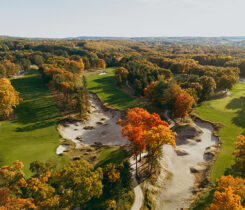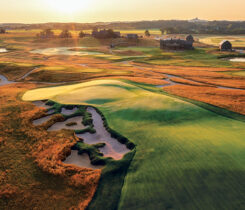Turf MD: Are forgotten bentgrass varieties worth a second look?
There are more than a hundred species of bentgrass. The most dominant is creeping bentgrass, but other species have had a history of use on golf courses. Three of those bentgrasses are Redtop (Agrostis gigantea), colonial (Agrostis capillaris) and velvet (Agrostis canina). I want to focus on these three because of their history and use in niche situations.
Redtop, colonial and velvet bentgrass, along with some creeping bentgrasses, comprised the earliest seed mix for golf course greens. The mix was known as South German bent. This mix was quite popular in the early 20th century throughout Northern Europe and the United States. Although South German bent no longer exists, each of its components does.
Redtop
Redtop, also known as black bent, is a widely adapted turfgrass. One limitation of its adaptability is its susceptibility to winter injury. Its life cycle is variable, considered an annual to a perennial. Redtop’s contribution to a seed mix, like that South German bent, was as a nurse crop. At the time, it was believed that Redtop had a rapid establishment rate.
Due to a lack of tolerance to cold and low mowing heights, Redtop would gradually disappear, replaced with the more desirable turfgrasses in the mix. Later, Redtop was found not to establish any quicker than some of the other grasses and was replaced by other species in the seed mixes, like perennial ryegrass. As golf course quality improved, Redtop’s leaf coarseness made it unacceptable. Basically, Redtop use ceased by the 1940s.
Colonial bentgrass
Colonial bentgrass is the second most used bentgrass on golf courses, behind creeping bentgrass. Colonial bentgrass is also known by the common name, browntop and, in a few instances, common bent. Colonial bentgrass is suited for the cool, humid regions of the world. Where we associate its use on courses is under links-type conditions.
Colonial bentgrass does not hold up well under heat or drought conditions. It is also extremely susceptible to the summertime disease, brown patch. Colonial bentgrass does not compete or persist at mowing heights less than a quarter inch — a major limitation in current golf course green management.
Colonial bentgrass has an upright, non-aggressive growth habit. Although given a rhizomatous growth habit, it will tend to get thatchy. In the past, fairway mixes featured colonial bentgrass and creeping bentgrasses like Penncross. The thinking was that the colonial bentgrass would reduce the aggressiveness of the creeping bentgrass. Unfortunately, colonial bentgrass did not persist — largely due to its adaptive limitations.
Seeded colonial bentgrass is a part of a mix of predominantly fine fescue. This type of seed mix is becoming quite popular on links-types golf courses built in New England and the Pacific Northwest. Management practices in colonial bentgrass and fine fescue mix should lean toward fine fescue.
Velvet bentgrass
Velvet bentgrass forms a turf that has the highest density and finest leaf texture as any of the bentgrasses. I think velvet bentgrass greens are as close to billiard-table surfaces as you can get. Interestingly given the high shoot density, velvet bentgrass is a relatively low-maintenance turf.
Primarily used in the New England area, the drawbacks to velvet bentgrass are its relatively poor environmental stress tolerance and poor wear tolerance, which may be the result of some degree of its slow vertical growth rate. It also needs to be established on well-drained acidic soils.
Although creeping bentgrass is the proverbial 800-pound gorilla in the room, bentgrasses like colonial and velvet could play a larger role in future management. As we continue to face climate and sustainability issues in golf, maybe a second look at turfgrasses that are forgotten or pushed to the side is worthy in certain situations.













